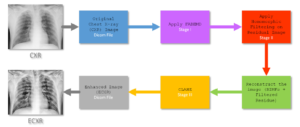AIM 2021 conference (http://aim2020.poliba.it/wordpress/home/ ) represents a forum for presentation and discussion of the most recent advancements in all the fields of Magnetics: theory, numerical modeling, experiments and applications. The event is open to experts and scientists with different backgrounds (engineers, physicists, mathematicians, material scientists, chemists, biologists, etc.) to present, discuss, exchange ideas, methods and results. The participation to the tutorial session is free.
Program – June 13rd, 2021
| Time (CEST) | Speaker Title of the tutorial |
| 14:15 – 15:00 | Xavier Moya, Department of Materials Science, University of Cambridge, UK Multicaloric materials Cooling is essential for food, medicine, electronics and thermal comfort of people in houses and cars, but existing technologies for refrigeration and air-conditioning are based on the compression and expansion of gases that are harmful for the environment. Cooling using solids is therefore attractive but thermoelectric cooling based on the Peltier effect, and optical cooling based on anti-Stokes fluorescence, are at best only ~10% efficient. By contrast, magnetocaloric, electrocaloric, and mechanocaloric cooling based on thermal changes produced in magnetically, electrically, and mechanically responsive oxides when subjected to changes in magnetic field, electric field and mechanical field promise higher efficiencies. In this lecture, I will: – describe the fundamentals of caloric materials from a historical perspective – give an overview of their measuring techniques – present recent advances on magnetocaloric, electrocaloric and mechanocaloric materials – and describe recent developments on cooling devices that are based on these materials. |
| 15:00 – 15:45 | Giovanni Finocchio, University of Messina, Italy Microwave and THz detectors based on spintronic diodes Microwave detectors based on the spin-torque diode effect are among the key emerging spintronic devices. By utilizing the spin of electrons in addition to their charge, they have the potential to overcome the theoretical performance limits of their semiconductor (Schottky) counterparts. In the first part of the talk, I will discuss our recent results in the field of microwave detectors based on spin diodes. Those devices realized with magnetic tunnel junctions exhibit high-detection sensitivity >200kV/W at room temperature, without any external bias fields, and for low-input power (micro-Watts or lower). This sensitivity, achieved taking advantage of the injection locking, is significantly larger than both biased state-of-the-art-Schottky diode detectors and other existing spintronic diodes. Another application of spintronic diodes is the electromagnetic energy harvesting. Here I will show the development of a bias-field-free spin-torque diodes that could be an efficient harvester of broadband ambient RF radiation, capable to efficiently harvest microwave powers of microWatt and below and to power a black phosphorous nanodevice. Finally, the talk will discuss the promising directions of THz detectors based on antiferromagnetic materials including their unique properties such as resonance response and tunability and the remaining challenges to face. |
Join at the link:

